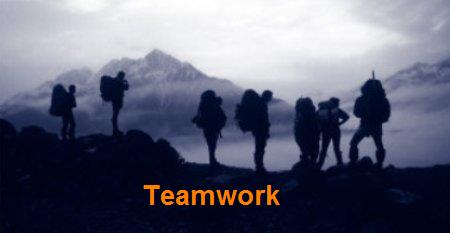Growing Together – Synthetic Teamwork

In Henry Mintzberg’s 1994 landmark book, The Rise and Fall of Strategic Planning, the author calls for a new method to create effective strategies. He notes that, “Strategic planning isn’t strategic thinking. One is analysis, the other is synthesis.â€
Mintzberg draws a definitive line between those that create strategy and those that devise the plan, arguing that the two are disparate exercises. He says, “Real strategic change requires inventing new categories, not rearranging old ones,†sage wisdom from the ’90s that has perhaps been forgotten by many American companies who play defense rather than offense during the economic downturn.
In regards to the nature, nurturing, and definition of innovation, the proverbial pendulum may have swung too far toward the creativity pole and away from quantitative analysis in some ways, causing many to doubt the credibility of innovation as a discipline.
But what if we merged the practices of strategic planning and innovation? Ultimately they seek the same end but each lack skills the other practice possesses. Numbers cannot possibility tell the whole story. Conversely, ideas are a dime a dozen until they are sized and validated.
It is simple really: creativity plus analysis equals breakthrough strategy. We believe that if the best of the two practices are brought together, companies can achieve synthetic thinking – one of the highest human functions. Thinking synthetically is the essence of growth – and a guiding principal for a growth team after the strategy is discerned.
The ability to generate original ideas and then validate, organize and monetize them is the holy grail of strategy. Being able to adapt is key. This new growth team then must remain nimble, always observing and testing the market. Strategy is by definition a plan. However, it is a living organism, not a document that is updated every few years and then returned to its dusty shelf.
This new team should be tasked with observing the emerging trends in the world, the socio-economic factors at work and the psychodynamics and drivers behind the groups of people in the value chain. Relying solely on historical data and trends to inform your next move does not generate big leaps in the marketplace.
How do you build this team at your company? Scratch your innovation group. Kill your strategic planning group. Then, repurpose them to a diverse cross-functional team of people tasked with identifying growth opportunities for the company.
This team should not be a homogenous group, forget the common pedigrees. Get some financial guys in there, consumer insights folks, marketing analysts, and don’t forget operations. What do they all have in common? Curiosity. Let them explore the possibilities together and then devise the strategy. Then, focus on growth as if the company’s life depended upon it, because it does.
Wait! Before you go.
Choose how you want the latest innovation content delivered to you:
- Daily — RSS Feed — Email — Twitter — Facebook — Linkedin Today
- Weekly — Email Newsletter — Free Magazine — Linkedin Group
 Michael Graber is the cofounder and managing partner at Southern Growth Studio, a Memphis, Tennessee-based firm that specializes in growth strategy and innovation. A published poet and musician, Graber is the creative force that complements the analytical side of the house. He speaks and publishes frequently on best practices in design thinking, business strategy, and innovation and earned an MFA from the University of Memphis. Follow Michael @SouthernGrowth
Michael Graber is the cofounder and managing partner at Southern Growth Studio, a Memphis, Tennessee-based firm that specializes in growth strategy and innovation. A published poet and musician, Graber is the creative force that complements the analytical side of the house. He speaks and publishes frequently on best practices in design thinking, business strategy, and innovation and earned an MFA from the University of Memphis. Follow Michael @SouthernGrowth
NEVER MISS ANOTHER NEWSLETTER!
LATEST BLOGS
What happened to smart advertising?
For a television advertisement to be effective, do you need to lay out everything for the viewer and make it obvious? Or, is an advertisement more memorable if you let the viewer connect the dots themselves? Here are two examples of television advertisements that promote the product in a slightly more intellectual/emotional way that promotes engagement and curiousity:
Read MoreInvention versus Innovation
Continuous innovation requires that innovation is placed at the center of the organization and that all parts of the organization are changed to support it. To effectively place innovation at the center of the organization, people must know what innovation is, what it looks like in their organization, and how they can contribute. Most people easily confuse invention with innovation, and wrongly chase invention in the name of innovation.
Read More



